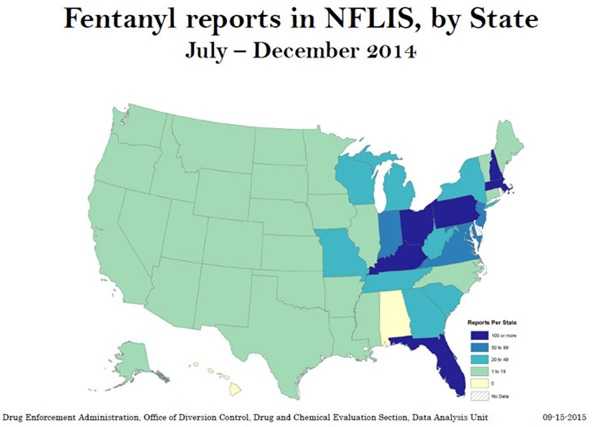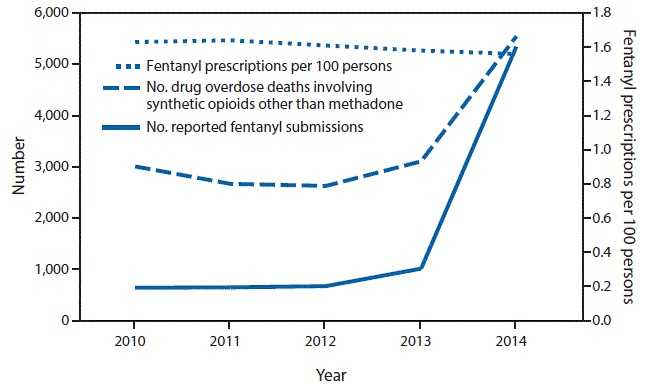Fentanyl: Preventing Occupational Exposure to Emergency Responders
Illegal Use of Fentanyl
The DEA describes fentanyl as a powerful narcotic associated with an epidemic of opioid-related overdose deaths in the United States. Fentanyl and its analogs are being mixed with heroin to increase potency or are being sold as heroin so dealers and buyers may not know exactly what they are selling or using. Fentanyl and its analogs come in several legal forms including powder, patches, tablets, and spray. Legally prescribed fentanyl is typically administered in patches or lozenges. Illicitly-manufactured fentanyl is often in the form of powder. Illegal use is often in the form of powder used for inhalation or injection, blotter paper, and patches. Illicitly manufactured fentanyl is also being pressed into counterfeit tablets and sold as commonly misused prescription opioids such as oxycodone and hydrocodone as well as being found in samples of cocaine, methamphetamine and other non-opioid substances.

National Overdose Deaths—Number of Deaths from Heroin. The figure above shows the total number of U.S. overdose deaths involving heroin from 2001 to 2014. The chart is overlaid by a line graph showing the number of deaths by females and males. From 2001 to 2014 there was a 6-fold increase in the total number of deaths. Source: https://www.drugabuse.gov/related-topics/trends-statistics/overdose-death-rates
Overdose deaths involving synthetic opioids other than methadone, including fentanyl, increased by 80% from 2013 to 2014. Reports from law enforcement indicate that most of the synthetic opioid overdoses may be due to illegally made fentanyl. To illustrate, in Ohio, in 2014, preliminary data show 514 fentanyl-related unintentional overdose deaths, almost a 500% increase from 2013 overdose deaths. For health advisory information about fentanyl-related overdose fatalities in Ohio and other states, see http://emergency.cdc.gov/han/han00384.asp.For more fentanyl overdose data see https://www.cdc.gov/drugoverdose/data/fentanyl.html

Source: CDC Injury Prevention and Control: Opioid Overdose
The DEA’s National Forensic Laboratory Information System (NFLIS) reported an increase in law enforcement seizures of fentanyl from 2012 to 2014. They reported that more than 80% of law enforcement seizure of fentanyl and its analogs occurred in just 10 states. Fentanyl reports by state are indicated on the map above.
An analysis of the relationship between illicitly manufactured fentanyl seizures by law enforcement and fentanyl overdoses was published in August, 2016, in the CDC Morbidity and Mortality Weekly Report (MMWR). This study revealed that changes in synthetic opioid-involved overdose deaths in 27 states were highly correlated with illicit fentanyl seizures by law enforcement in those states. The figure below is taken from this MMWR study. It depicts the recent increase of synthetic opioid deaths and the increase in illicit fentanyl seizures, described in the figure as fentanyl submissions.
Trends in number of drug overdose deaths involving synthetic opioids other than methadone, number of reported fentanyl submissions, and rate of fentanyl prescriptions — United States, 2010–2014

Source: MMWR 65(33);837–843, https://www.cdc.gov/mmwr/volumes/65/wr/mm6533a2.htm
- Page last reviewed: November 28, 2016
- Page last updated: November 28, 2016
- Content source:
- National Institute for Occupational Safety and Health Education and Information Division


 ShareCompartir
ShareCompartir